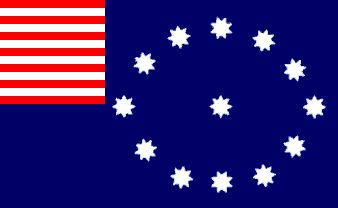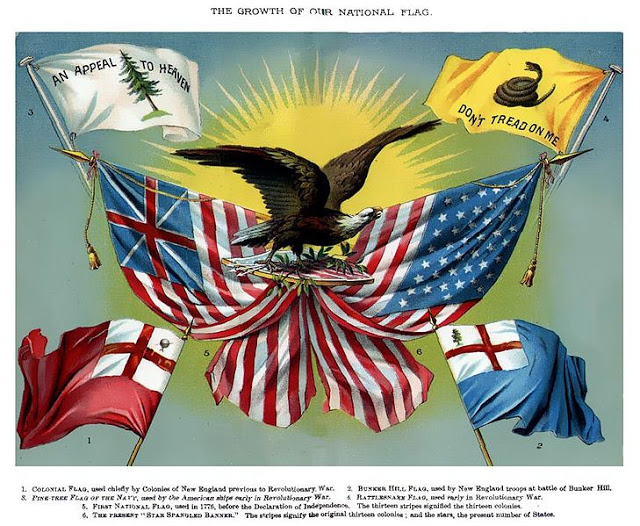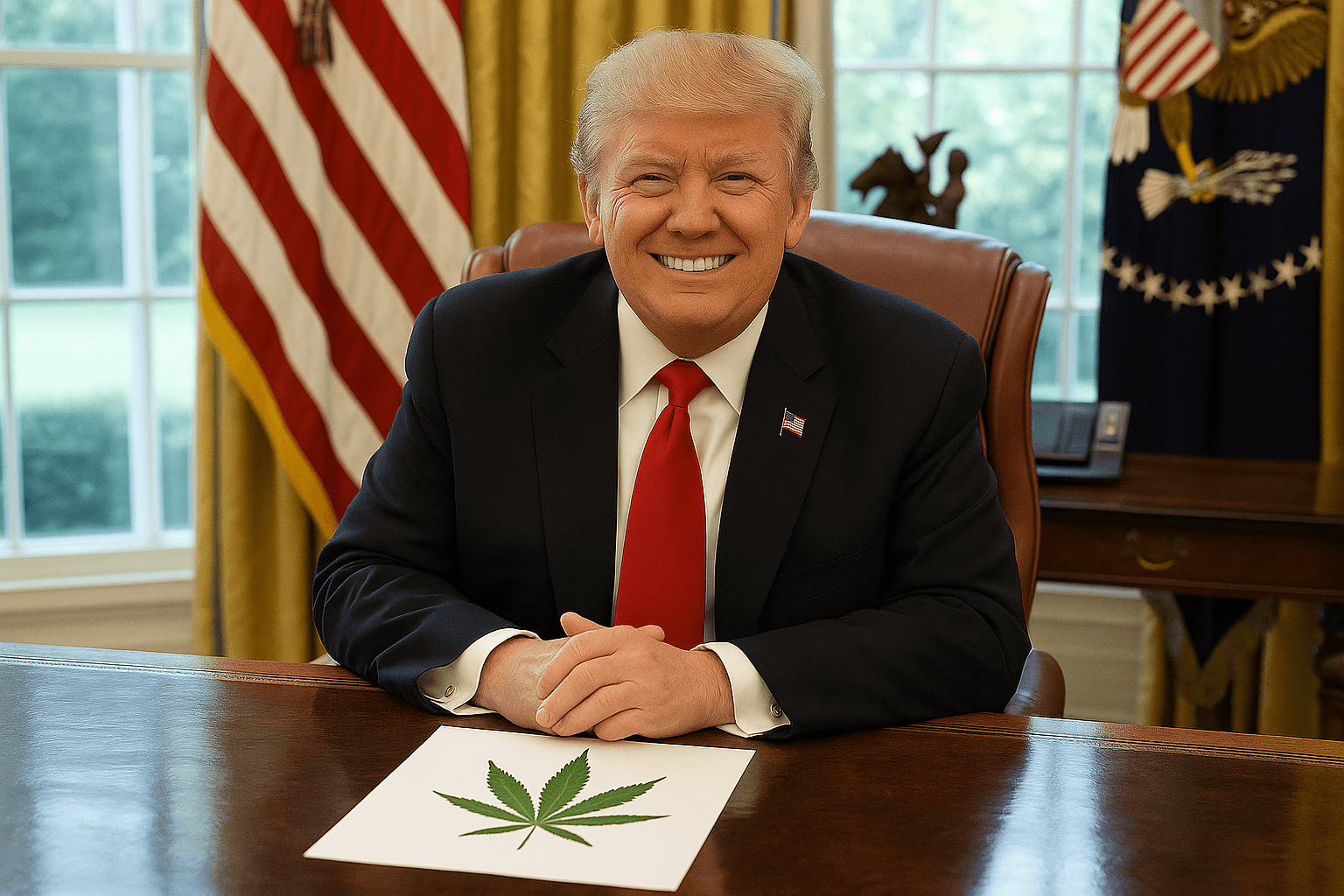The Facts versus the Myths about Our Flag, and how they relate to commerce and politics

Friday, June 14th 2013 was flag day, a day which tends to go uncelebrated, and about which most people know very little.
This post will be a brief detour from my continuing series on the different facets of the Kiera Wilmot Bottle Bomb story.
It looks long, and it is, but most of it is pictures. As you look through the various images included here, I hope you will contrast the actual origins of the U.S. flag, as it was originally adopted by the Founding Fathers, and contrast that with the nice little folk story about Betsy Ross.
While it is true that Ms. Ross was commissioned to sew a flag for the new entity we call the United States of America, it is NOT true that her design was very original, as you will see below. Our flag is in reality, a reworking of the official flag of the East India Company, which I think puts an interesting cast on the role of corporate involvement in both our government and our history. This is particularly intriguing, in respect to the Boston Tea Party, which was a protest equally against British taxation AND the monopoly of the East India Corporation regarding tea and other items that were important to consumers, and on which the East India Company made huge profits because of that monopoly arrangement with the British government that they exploited so greatly to their advantage.
This raises the inevitable question, was this the most patriotic and best choice for a new nation, seeking to separate and distinguish itself clearly and unmistakably from other entities, either corporate or national? In my research into these flag designs, I have yet to discern an adequate explanation for this choice that really makes sense in terms of a symbol representing our national identity.
Also, contrary to the folk myths, there were both more people and more alternatives involved in the flag choices than the one submitted by Betsy Ross in the traditional version of events involving her and George Washington.
 I like the history of our holidays, major and minor. So in honor of our flag and Flag Day, here is a brief description and history of our holiday. Flag Day celebrates the adoption of a national flag at the Second Continental Congress on June 14, 1777.
I like the history of our holidays, major and minor. So in honor of our flag and Flag Day, here is a brief description and history of our holiday. Flag Day celebrates the adoption of a national flag at the Second Continental Congress on June 14, 1777.
The Flag Act of 1777 was passed by the Second Continental Congress on June 14, 1777, in response to a petition made by an American Indian nation on June 3 for "an American Flag." (As a result, June 14 is now celebrated as Flag Day in the United States.) It reads, in its entirety: "Resolved, That the flag of the United States be made of thirteen stripes, alternate red and white; that the union be thirteen stars, white in a blue field, representing a new Constellation." (See Journals of the Continental Congress, 1774 – 1789, 8:464.)
In the first year of the American War for Independence, the Continental Congress authorized the creation of a navy. A new flag was required representing the Congress and fledgling nation, and distinguishing from the Red Ensign flying from British vessels.The Continental Colors were first hoisted on the Alfred, in Philadelphia on December 2, 1775, by Lt. John Paul Jones. The event had been documented in letters to Congress.The Continental Colors were used by the American Continental forces as both naval ensign and garrison flag through 1776 and early 1777.It is not known for certain when, or by whom, the Continental Colors' design was created, though the flag could easily be produced by adding white stripes to the previous British Red Ensigns.The Alfred flag has been credited to Margaret Manny.
Margaret Manny was a milliner in colonial Philadelphia who made flags for the United States during the American Revolution.Manny began making jacks and ensigns for ships as early as December 1774. She also made the Grand Union Flag, or Continental Colors, first flown by John Paul Jones aboard the Alfred on 3 December 1775.

- "According to the American Flag Research Center in Massachusetts the heraldic origin of the American flag is not positively known; archives in the British Library confirm that the Stars and Stripes was the coat of arms of the Ap Merike family – and that they pre-date Washington's connection with the continent by 300 years".
"...both the stripes (barry) and the stars (mullets) have precedents in classical heraldry. Mullets were comparatively rare in early modern heraldry, but an example of mullets representing territorial divisions predating the US flag are those in the coat of arms of Valais of 1618, where seven mullets stood for seven districts."The thirteen original colonies were the basis for thirteen stripes and the thirteen original stars on the first official U.S. flag, but in the Flag Act of 1794, that was temporarily expanded to fifteen stripes and stars with the admission of the first two new states. Had that pattern continued, our flag would now have 50 stripes along with the 50 stars.It is a fascinating insight into how the flag has changed, but also into how the nation under George Washington thought about our national expansion at the time. It wasn't until the Flag Act of 1818 that the stripes were codified as representing the original 13 colonies, with the stars changing -- with such changeovers always mandated to occur on July 4th -- to represent the number of states at any time in our nation with only the stars.Here is the order of the states joining, representing each of those stars, because of course there was no official membership or ratification until AFTER the sessions of the Continental Congress:Delaware (December 7, 1787), Pennsylvania (December 12, 1787), New Jersey (December 18, 1787), Georgia (January 2, 1788), Connecticut (January 9, 1788), Massachusetts (February 6, 1788), Maryland (April 28, 1788), South Carolina (May 23, 1788), New Hampshire (June 21, 1788), Virginia (June 25, 1788), New York (July 26, 1788), North Carolina (November 21, 1789), and Rhode Island (May 29, 1790) (source - Flag Timeline)



